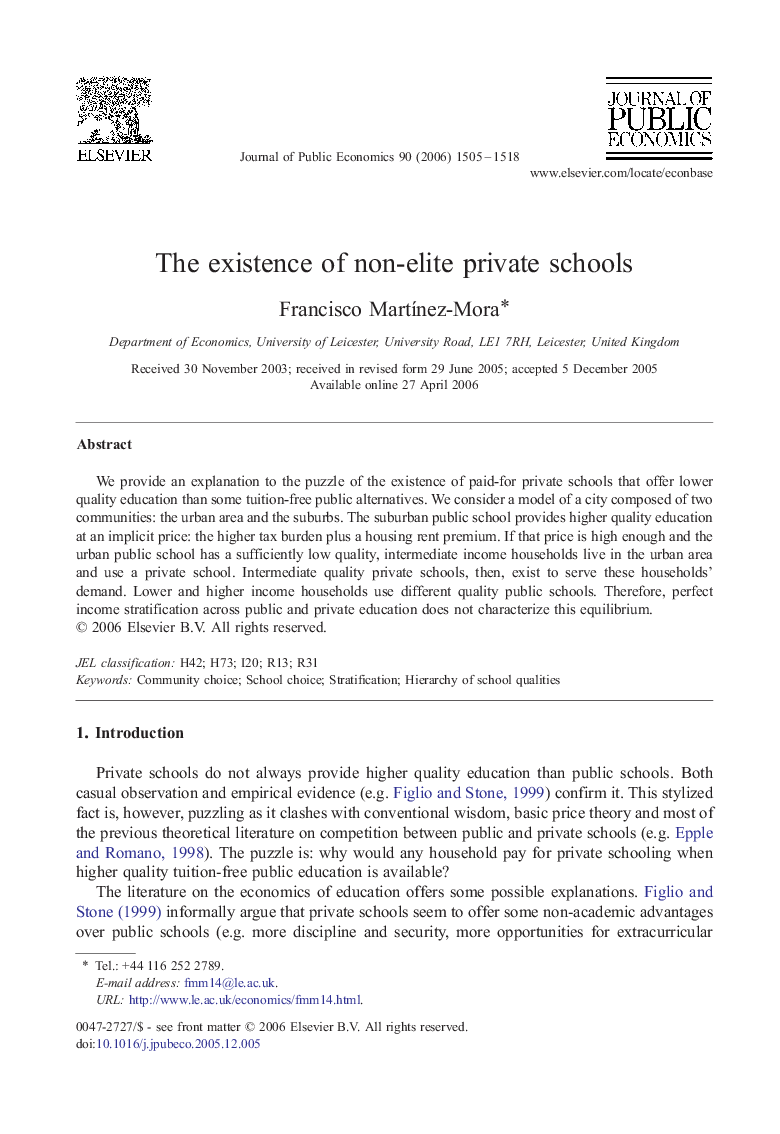| Article ID | Journal | Published Year | Pages | File Type |
|---|---|---|---|---|
| 970386 | Journal of Public Economics | 2006 | 14 Pages |
We provide an explanation to the puzzle of the existence of paid-for private schools that offer lower quality education than some tuition-free public alternatives. We consider a model of a city composed of two communities: the urban area and the suburbs. The suburban public school provides higher quality education at an implicit price: the higher tax burden plus a housing rent premium. If that price is high enough and the urban public school has a sufficiently low quality, intermediate income households live in the urban area and use a private school. Intermediate quality private schools, then, exist to serve these households' demand. Lower and higher income households use different quality public schools. Therefore, perfect income stratification across public and private education does not characterize this equilibrium.
